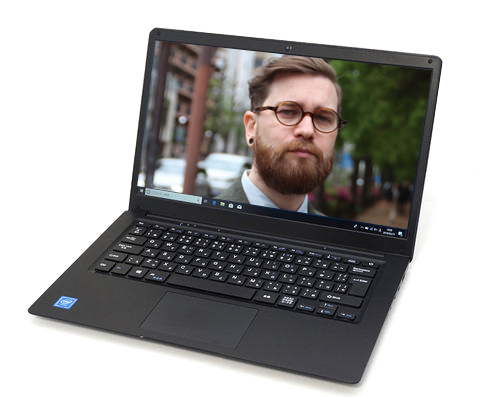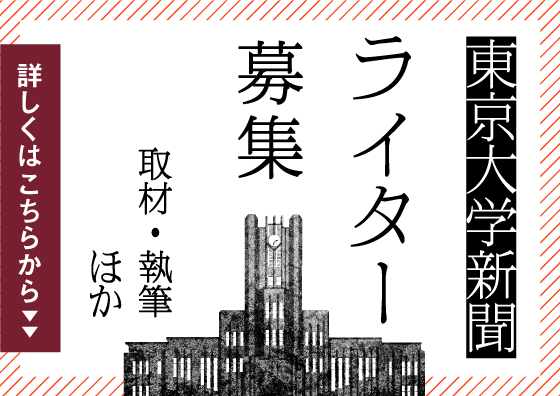We, without doubt, lay ourselves in “places,” which, if we heed the specialty of things therein or the history therewith, appear to us as having a variety of meanings. In this serial article, we aim to contemplate various “places” found in Todai’s campuses with the cultural geographer Dr. James Thurgill, who interprets “places” by employing a knowledge of the humanities that spans philosophy, history, anthropology, and so on. Our seventh meeting is at online classes.
(Interviewed, Written and Translated by Mon Madomitsu)

In Part 1 of this article, we explored the commonality between online and physical classes. This time, we contemplate the negative aspects of online classes based on their differences to physical space, and consider how we can overcome these issues through a transformation of our thought. Here we have two subjects of discussion: the loss of corporeality and the limit of mobility.
Firstly, it is clear that the absence of corporeality in online classes is one of the most important points to consider. Much of our communication happens nonverbally via body language. Most of the time, the nonverbal signals that we present in communication – nodding, facial expressions, and so on – can easily be received by the person or people we are speaking to. For various reasons, online classes are restricted to audio only and there can be no perceivable nonverbal communication in situations where the web camera has been deactivated. The loss of corporeality in online classes means that there is a higher possibility of miscommunication occurring.
On this matter, Dr. Thurgill inquires: “Although it is undeniable that communication would be inadequate in such cases, might we not simultaneously find a positive side to the loss of corporeality?” According to Dr. Thurgill, such a positive could be the “democratization of place.”
“Everyday we unconsciously encounter power relationships in the corporeal world,” says Dr. Thurgill. That corporeality is, or that a (physical) body is in a space, means in other words that a body has a position. And the relationships of positions are frequently the relationships of power. “A boss sits at the head of the table during a meeting, a professor stands in front of a blackboard during a class while their students sit facing them. Each of these examples represents and maintains the actual power relationships at work.” In online classes, however, an equally sized rectangular frame for each participant is displayed on a screen, regardless of whether the user is a professor or a student. Furthermore, if we turn off the camera, there remains only one’s voice and ideas. “As our experience of communication is “flattened” in online classes, we can say that the place where the class occurs becomes more democratic.”
So far we have paid attention to the point where the loss of corporeality weakens the power relationship. Yet on the other hand, we should not overlook the fact that the online system that creates such an environment can paradoxically work in the direction of strengthening the power relationship in favor of the host.
In Zoom, an online communication system that a number of universities currently use as their default online teaching platform, much of the power is concentrated on the host of a meeting room (which is, in most cases, a lecturer). A host has the power to mute participants’ microphones and cameras, force them to move to another room, eject them from the meeting, and so on. Such an asymmetrical relationship between lecturer and student is not to be seen in physical classes. For a lecturer, no matter how much power he or she possesses, has no means but to depend on mere violence in order to take students out of the classroom or rob them of their voices.
Dr. Thurgill then answers to this problem as follows: “Places do not exist unless humans make them. This is the common understanding of place shared by cultural geographers. It should not be forgotten, then, that the system of an online meeting room is nothing but a product of the Zoom company. It, too, forms a socially constructed place.”
Should we take the framework of communication provided by Zoom for granted, the power relationship between a host and the other participants would be represented as something stable, the status quo. In order to deconstruct this power relationship, we should constantly question the very place that produces such a relationship in the first place.
Broadly speaking, the importance of acknowledging that a place is mediated by technology is not limited to the issues regarding online classes. “Nowadays, in the prevention of COVID-19 infection, there are more and more discussions as to the practical means to regulate human activities through the use of big data. In such a circumstance it is dangerous not to question the technology that shapes our daily life, and thus we must not take it for granted.”
Let us now move on to the second subject of discussion, namely, the limit of mobility. This is a problem that bothers a number of university students, as we often see reflected in Twitter opinions claiming that taking online classes is like studying in a jail. Certainly, we university students can no longer simply go to a classroom by walking freely through our college campuses. The only way to access online classes is to click the URL, and we cannot enjoy stopping by some place on the way from one classroom to another when we do so.
To this problem Dr. Thurgill questions, “Isn’t the limit of mobility the same in our physical space?” The majority of a city consists of privately owned land, and we have no right to access most of the places that surround us. Even in a shop, there is a clear demarcation of the areas where customers have access to and those where they do not. Nevertheless, we feel as if there is a freedom of mobility in physical space. This feeling occurs only because we walk through a city by avoiding these inaccessible places without paying much attention to them.
“It is the demarcation of space that makes us notice the being of a place,” says Dr. Thurgill. A place which has so far not been heeded well, presents itself in a radical way in online classes.
Yet, on the other hand, we might overlook one important factor – “time.” The conclusion we arrive at on this occasion is one inferred from our focusing on “space.” But if “time” is also something essential to mobility, how can we confront this problem? We would like to continue considering this issue with Dr. Thurgill in our next article.
【Japanese Article】
【Serial Articles】
Take a Walk through Todai’s Campuses with Dr. Thurgill #1 Akamon, Hongo Campus
Take a Walk through Todai’s Campuses with Dr. Thurgill #2 Sanshiro Pond, Hongo Campus
サーギル博士と歩く東大キャンパス③ 駒場Ⅰキャンパス 1号館
Take a Walk through Todai’s Campuses with Dr. Thurgill #3 Building 1, Komaba Campus
サーギル博士と歩く東大キャンパス④ 本郷キャンパス 総合図書館 【前編】
Take a Walk through Todai’s Campuses with Dr. Thurgill #4 General Library, Hongo Campus 【Part 1】
サーギル博士と歩く東大キャンパス④ 本郷キャンパス 総合図書館 【後編】
Take a Walk through Todai’s Campuses with Dr. Thurgill #4 General Library, Hongo Campus 【Part 2】
サーギル博士と歩く東大キャンパス⑤ 駒場Ⅰキャンパス 駒場池【前編】
Take a Walk through Todai’s Campuses with Dr. Thurgill #5 Komaba Pond, Komaba Campus 【Part 1】
サーギル博士と歩く東大キャンパス⑤ 駒場Ⅰキャンパス 駒場池【後編】
Take a Walk through Todai’s Campuses with Dr. Thurgill #5 Komaba Pond, Komaba Campus 【Part 2】
サーギル博士と歩く東大キャンパス⑥ 駒場Ⅰキャンパス 数理科学研究科棟
Take a Walk through Todai’s Campuses with Dr. Thurgill #6 The Mathematics Building, Komaba Campus
Take a Walk through Todai’s Campuses with Dr. Thurgill #7 Online Classes










